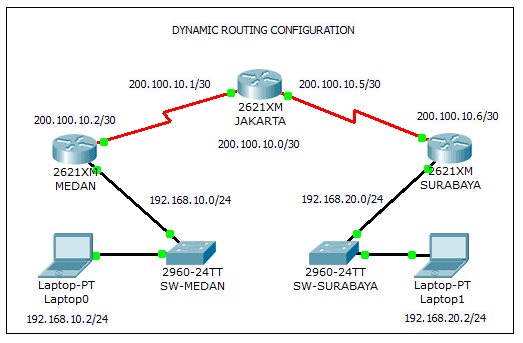What is Dynamic Routing ?
Steering is a methodology of settling on choices where the switch (which is an equipment gadget utilized in systems administration to get and send information as bundles on an organization) chooses the best way to make information move from source to objective. A switch exists in the organization layer in the OSI as well as TCP/IP model. A few elements of a switch are:
Building an ideal way on an organization to arrive at its objective (where static and dynamic directing occur).
Taking steering choices.
Adjusting load.
Kinds of Routing:
Static steering
Default steering
Dynamic steering
Static and Default steering has a few downsides, because of which Dynamic Routing was presented.
Disadvantages of Static Routing:
It is a difficult errand to summarize or add-on each course physically to the steering map in an enormous organization.
Dealing with its requesting is tedious.
It can't reroute traffic on the off chance that some connection falls flat.
Disadvantages of Default steering was:
On the off chance that the organization is complicated, it is more hard to set up.
To beat the weaknesses of static and default steering, Back during the 1980s, the very first Dynamic directing was utilized in a PC and the convention which was utilized in it was the RIP(routing data convention).
Dynamic Routing
Dynamic steering is known as a strategy of tracking down the best way for the information to go over an organization in this cycle a switch can send information through different various courses and arrive at its objective based on conditions around then of correspondence circuits.
Dynamic Routing
Dynamic Routing
Dynamic switches are savvy to the point of following the best way for information in light of the state of the current situation around then of the organization. On the off chance that one segment flops in the organization to move information forward unique switch will utilize its calculation (where they use steering conventions to assemble and divide data of the ongoing way between them) and it will re-course the past organization over one more organization continuously. Furthermore, this astounding ability and usefulness to change ways continuously over the organization by dividing status between them is the vital usefulness of Dynamic Routing. OSPF (open briefest way first) and RIP are a few conventions utilized for dynamic steering.
In the picture over the upper picture portrays the way R1->R2->R5->R9->R10 to take information from R1 (source) to R10 (objective) however at that point because of some explanation R9 neglects to deal with its work then it progressively fabricates another way which is R1->R2->R5->R8->R10.
Dissimilar to the static switches where the administrator was there to reconfigure the adjustment of the switch, here it itself changes the course and tracks down the best organization/way.
Working of Dynamic Routing
Working of Dynamic Routing
Working of Dynamic Routing
Initial, A steering convention (a convention that states how the data will divide among switches and how are they going to speak with one another to share/disseminate data between hubs on an organization) should be introduced in every switch in the organization to divide data between one another.
Second, it is begun physically to go to the first steering table of the switch with switch data, and afterward after that it continues consequently with the assistance of a dynamic directing calculation and progressively frames the directing table until the end of the switches in the organization.
Third, then the directing data is traded among the switches so in the event that assuming the organization goes down or the switch neglects to work and impart data to its associated switches then the steering table of every switch is changed accurately to that current condition so it never neglects to convey data to the objective.
Fourth, has are available to check or match the default entryway address to the IP locations of the neighborhood switch.
Reason
Dynamic conventions were acquainted with:
Investigate each and every way and pick the best way.
Sharing of data about the organization with one another switch present in the organization.
Refreshing the way all alone and rerouting the most ideal way.
Parts
There are three principal parts that were utilized in powerful directing:
Information structure ( to structure data )
Calculation ( to develop or re-update way )
The steering convention ( to share data about the organization )
Benefits
Useful in Performance as well as versatile systems administration with a high recurrence of information on hubs.
Commits less errors as it reroutes itself contrasted with other steering conventions.
Don't bother being physically designed by the administrator.
Shares data about the organization with one another makes them more dependable to proficiently work.
Drawbacks
Requires all the more weighty and dependable strong equipment.
Higher support contrasted with static convention
